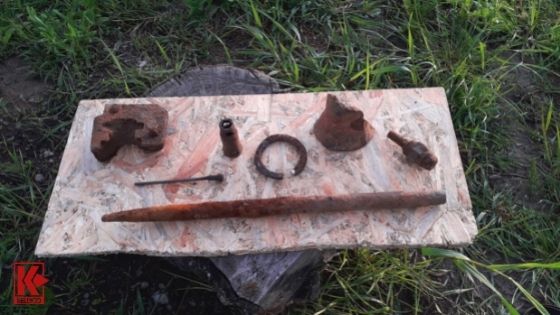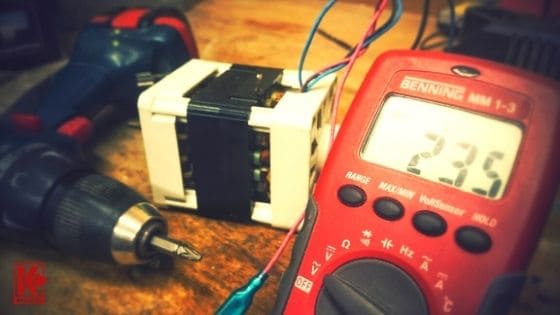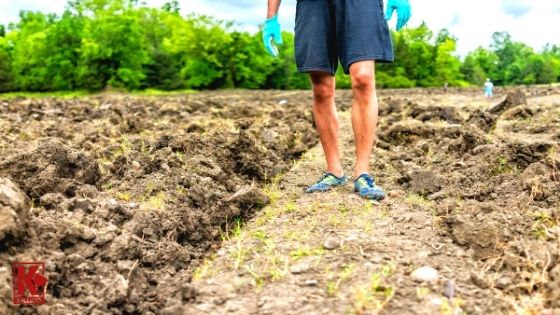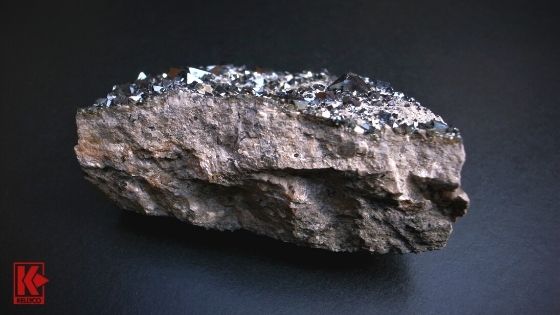Treasure Hunting: The Complete Guide
Published by Jenna Anderson on 06/22/16
Treasure Find Laws Around the World
I have the honor to read and upload the treasure hunting stories as they come in. Many times there are some great conversations that come from emailing the writer to let him or her know that their story is up on the site in our treasure finds section.
One of the most memorable exchanges was about how England requires all relics found be handed over for inspection. It made me wonder what other countries around the world have in place for metal detecting finds. During my research, I found a list of where detecting is allowed and banned, which is useful in and of itself but I want to focus on what to do after you have a find in hand.
Germany

Know The Rules
According to the European Council for Metal Detecting, each “Land”, similar to a state in the USA, has their own laws on metal detecting so it is best to contact local law enforcement to verify rule and regulations.
Belgium
Most of the country is not allowed to search for artifacts and when they do find one it is typically not reported for fear of punishment. However, In the Flanders region, you have to register as a metal detectorist and receive a permit. Once you do find an artifact you must report it immediately and hand it over to the government or archaeologists for inspection on request.
United Kingdom
They probably have the best process in the world. All of the information is detailed on the government website. Once you have a find that meets the requirements of a treasure, you must report it to the local coroner. Once they write a report you will get your find back, unless a museum wants it, in which case you most likely will get a monetary reward.
India
According to the Treasure Trove Act any treasure find, by a metal detector or otherwise, of more than 10 rupees (currently ~.16 USD) must be reported to the Collector. It is then handed over or a deposit given to the government as soon as possible. After a process of trying to find the owner is completed, you will get all or part of the find depending on the outcome of the Collector’s findings.
Canada

Finding Of Relics
Each Providence has rights over how it handles the finding of relics, including old coins. In general though, if you find anything that the government has outlined as artifacts you are to stop what you are doing and call the appropriate authorities. Nova Scotia has a portion of its website dedicated to what to do if you find something while metal detecting. They even have the number for the Nova Scotia Museum.
United States
For the most part in the United States, it is a finders keepers situation for relics and old coins. There is an exception, offshore shipwrecks. In 1988 the Abandoned Shipwreck Act went into effect. You can’t go out and start looking for a shipwreck to salvage. In Florida, the rights are given through a permit. When a permitted salvor does make a find they have to report it to the state. Once the state has assessed the find they may give the salvor a portion of the find.
Bulgaria
Once again I will refer to the European Council for Metal Detecting since they have just published the basic laws on their website. Basically, you can search for lost items on private land (with permission of course) but hunting for artifacts and on/near historical sites is against the law.
Another exception is if you come across a Native American burial ground. You must stop what you are doing and report it to the authorities.
Then there is the difference between mislaid vs. lost vs. abandoned treasure. Depending on the situation you may be required to attempt to get the find back to its owner. Even then, each state has different laws in place on how to deal with each situation.
No matter where you go hunting it’s always best to do a bit of research and be sure to ask the authorities before you travel. This is even more important in countries that you don’t detect or live in.
The plan is to update this post as laws change and we find more information. If you have a country you’d like to add to the list email us with information and a link to official documentation or scholarly works that we can verify and reference to newsletters@kellycodetectors.com.
Why All Treasure Finders Needs a Resistivity Meter
As an avid treasure hunter, I have been reminded many times that treasure hunting is not easy (or cheap)! We all want it to be, but at the end of the day it’s actually a lot like work.
You’ve got to dig a lot of holes and try lots of equipment to figure out what works the best. When people ask why I treasure hunt, I tell them that it’s just a more expensive way to play the lottery! Most people don’t get it… That being said, every treasure hunter knows that you’ve got to have the right equipment if you want to actually “win that lottery”. For example, you wouldn’t use a 2-box detector to find a lost wedding ring on the beach, and you’re definitely not going to find an old Spanish Mine or a KGC Cache Site with a cheap coin shooter.

Resistivity Meter
It is my belief that if something is worth hiding, it is worth hiding well! I wouldn’t want someone accidentally stumbling onto my cache, so I would make it very hard to get to. The deeper the better, right? Unfortunately for us, this could mean that some of those big jackpot sites we’ve been trying so hard to find might be just out of the range of our best metal detectors!
This dilemma leaves us with a couple of options.. Ground Penetrating Radar and Electrical Resistivity Tomography. GPR is an amazing tool, but it can be hard to use and/or interpret depending on the terrain and/or soil conditions. It can also be very expensive! Electrical Resistivity Tomography (ERT) is another great way to reach the depths that are beyond the reach of metal detectors. If you are not familiar with it, ERT is basically the reading of changes in an electrical current, in Ohms, as it passes through different materials. An old mine shaft or cave will ‘resist’ the current much more than a barrel full of gold. But, just like GPR, professional resistivity meters can be very expensive and hard to use.
Until now..The EZ Res Pro is an affordable and very easy to use resistivity meter that can be used to perform simple 2 probe ERT surveys or the more complex 4 probe surveys that professional geophysical surveyors use. It is as simple as driving 2 to 4 probes into the ground, connecting a few wires, and pressing a button. All you do is look for big changes in the Ohms readings. An anomaly like a cave will be very resistant to the current and will result in a high Ohms reading. A big stack of buried gold bars will be very conductive and will result in a low Ohms reading. Depth is simply a function of probe spacing. As you move the probes out, the depth of the reading increases and is roughly calculated as ½ of the probe spacing. The EZ RES PRO can reach depths from 1 to 50 meters or more and also has imaging capabilities with the included Voxler Software.
The EZ Res Pro is made by professionals for professionals and is a
must have tool for every treasure hunter’s equipment arsenal! If you are
serious about treasure hunting, the EZ RES PRO is for you!
With the EZ Pro Resistivity Survey Meter, there are no Gimmicks, Just Results!
-Robert Leonard
Terra Exploration Group
Garrett’s Three “Be’s” of Treasure Hunting
Charles Garrett, Master Treasure Hunter, and Author, Offers Basics for Beginners
Ask veteran treasure hunters for their keys to successful hunting and you are bound to hear all sorts of advice-some sound and some not so sound.

Charles Garrett, Master Treasure Hunter
Lord knows I’ve imparted as much wisdom over the years as I could to help my fellow coin shooters and relic hunters find more of what they were seeking. If I was asked to boil down all of my treasure hunting advice into three key bullet points, I would have to simplify it as:
- Be Patient
- Be Prepared
- Be Persistent
I must admit that this sounds almost ridiculously simple but part of being successful in the field is preparing yourself before you set out. It means doing the right research to find those good places to hunt. It also means learning your detector thoroughly, using your headphones to hear those deep targets and carrying the right recovery tools. Persistence and patience are equally necessary ingredients to success. For example, some of the old homesteads and historic areas you work may require you to dig a certain amount of useless items to find those cherished artifacts.
For decades, I have gone out prospecting and relic hunting with a special recovery tool that I have grown quite fond of. It has a sturdy digging blade for chopping through soil, clay and even small tree roots. Opposite from the blade is a rake head for sifting through sand and loose soil to find smaller treasure targets. The base end of the wood handle contains a magnet to clear ferrous junk metal from my excavation areas.
Have you ever wanted that ideal way to carryall of your detecting gear with you into the field? The new Garrett Detectorist’s Backpack will hold an entire Deluxe Gold Pan Kit, two metal detectors (one secured to the back of the pack and one disassembled inside), extra search coils, digging tools and all of your personal treasure hunting accessories! Best of all, this rugged new pack can be purchased as one of our Spring Specials bundled with ten other items at a special price.
Don’t miss our other Spring Specials advertised in this Garrett Searcher. The price of gold continues to be at record high levels, making the Garrett Scorpion Gold Stinger package a smart buy. Also offered is an exceptional price on a kit that includes the ACE 250 metal detector, the Garrett PRO-POINTER, our new ClearSound Easy Stow headphones and the Garrett Detectorist’s Backpack. Your good treasure hunting preparation might include the new tips you learn from reading one of our field guides. It might also include using a better recovery tool. It may be the peace of mind of knowing your new backpack contains everything you will need in the field. Be prepared. Be persistent. Be patient. But don’t be surprised when these “be’s” help lead you to exciting new treasure!
– Charles Garrett.
Hunting Diamonds and Gemstones with a Metal Detector
They say diamonds are a girl’s best friend but how about a metal detecting enthusiast’s?
Diamonds and gemstones are fun to find and can bring a nice, tidy profit to an already growing collection. Unlike other precious metals though they require a little bit more knowledge and skill to locate.
To begin with, diamonds are gemstones that occur naturally in the formation of coal.

Hunting Diamonds
They are primarily found in areas where erosion and volcanic activity have occurred in the past. Diamonds and gemstones formed by these naturally occurring phenomena are carried by the flow of rivers, glaciers, and streams where they can end up with other rocks and debris. In their natural state, they are not the cut and polished gem that everyone knows and loves. In fact, diamonds look just like normal rocks and most metal detecting enthusiasts pass over them because of their appearance.
The majority of diamonds dug from the ground today are actually mined for by large corporations in South Africa.

Crater of Diamonds State Park
While the United States does have diamonds throughout, commercial diamond mining has since ended due to low production. There is a former diamond mine located in Arkansas called the Crater of Diamonds State Park that does allow tourists to hunt for diamonds at a nominal fee. Although diamond foraging is permitted, the park does not allow metal detectors.
Diamonds found in the United States are mostly prospected by hobbyists with a diamond detector. While a metal or diamond detector cannot specifically find gemstones, diamonds or pearls, they can find indicator minerals around the precious rock. The prospector will use the presence of these indicator minerals as a sign where a volcanic or gold pipe may lay. This lets the prospector know he or she is close to where the diamonds originally formed.
These indicator minerals can include magnetite, glassy green olivine, chromium garnets and black picroilmenite.

Magnetite
Interestingly enough, these are the very same minerals that gold prospectors use to find their payload. This is why a gold metal detector can also be a diamond detector if the prospector knows what they’re looking for. Diamond detectors will typically operate at a much higher frequency than other metal detectors and have a greater sensitivity to gold nuggets. They are also highly functional in mineralized soil and have a deeper detection depth.
Finding natural and uncut diamonds in a sand or mud deposit is exciting even though most prospectors have better luck finding diamonds that have already been affixed to jewelry. There are more than a thousand pieces of jewelry misplaced every year including rings, watches, bracelets, earrings, and necklaces that contain diamonds or gemstones. In fact, statistics state that for every thirty gemstones lost there is one misplaced diamond. These pieces of lost jewelry are typically found by metal detectorists in outdoor concert venues and pavilions, golf courses, restaurants, and beaches. All-purpose metal detectors are perfect for finding jewelry with diamonds because the metal is typically made from copper, silver, platinum, and gold. Some of these include the Garrett ACE Apex, the Minelab Equinox 800, or the Garrett AT Pro.
Whatever the state of the diamond, prospecting for these precious gems makes a rewarding treasure hunting experience. What’s even better is that hunting for diamonds and gemstones means that gold and other precious metals are not too far off. Armed with the right diamond detector and a head full of knowledge, a prospector can dig up the dream of a lifetime!
